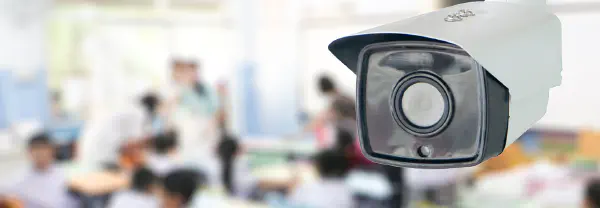
In a rapidly evolving world, security and surveillance have become paramount concerns. To address these issues effectively, technology has played a pivotal role. One of the most groundbreaking technological advancements contributing to this field is image processing. In this blog, we will explore how image processing is revolutionizing security and surveillance.
What is Image Processing? :
Image processing is the manipulation of an image to extract meaningful information or enhance its quality. It involves various techniques like filtering, transformation, and segmentation. In the context of security and surveillance, image processing focuses on analyzing visual data from cameras, drones, or other imaging devices.
📹Improving Video Quality :
Clear and high-quality images are essential for surveillance systems. Image processing algorithms can enhance the quality of videos by reducing noise, improving contrast, and sharpening details. This ensures that security personnel have access to sharp and accurate images, enabling them to identify potential threats more easily.
🔍Object Detection and Tracking :
Image processing technology can automatically detect and track objects or individuals within a frame. This capability is invaluable in surveillance scenarios. For instance, it can be used to identify unauthorized persons in restricted areas or track the movement of a suspect in a crowd. Advanced algorithms can even predict an object’s future location based on its trajectory.
👮♂️Facial Recognition :
Facial recognition is a powerful tool in security and surveillance. Image processing techniques enable systems to compare captured faces with a database of known individuals, quickly identifying potential threats or persons of interest. This technology has applications in law enforcement, access control, and airport security.
🚧Intrusion Detection :
Image processing can be employed to detect intrusions into secure areas. By analyzing live video feeds, algorithms can identify unusual activities or objects in real time. This helps security personnel respond swiftly to potential threats, preventing security breaches.
🗠Anomaly Detection :
One of the key strengths of image processing is its ability to detect anomalies in large datasets. In surveillance, this means identifying unusual patterns or behaviors that may indicate a security risk. For instance, it can identify a person leaving a bag unattended at an airport or a vehicle moving against the flow of traffic.
🏟️🏃♂️Crowd Monitoring :
In crowded public spaces, image processing can monitor crowd behavior for safety and security purposes. It can detect overcrowding, identify potential incidents, and assist in crowd management. During events or emergencies, this technology is indispensable for maintaining order and ensuring public safety.
Integration with Other Technologies :
Image processing doesn’t operate in isolation. It can be integrated with other technologies like artificial intelligence (AI) and the Internet of Things (IoT) for more comprehensive security solutions. AI-powered image analysis can provide real-time threat assessments, while IoT devices can provide additional sensor data for context.
In conclusion, image processing technology has transformed the landscape of security and surveillance. It empowers organizations and authorities to monitor and protect people and assets more effectively. As this field continues to evolve, we can expect even more sophisticated applications that enhance our safety and security in an increasingly complex world. With image processing at its core, the future of security and surveillance is bright and promising.